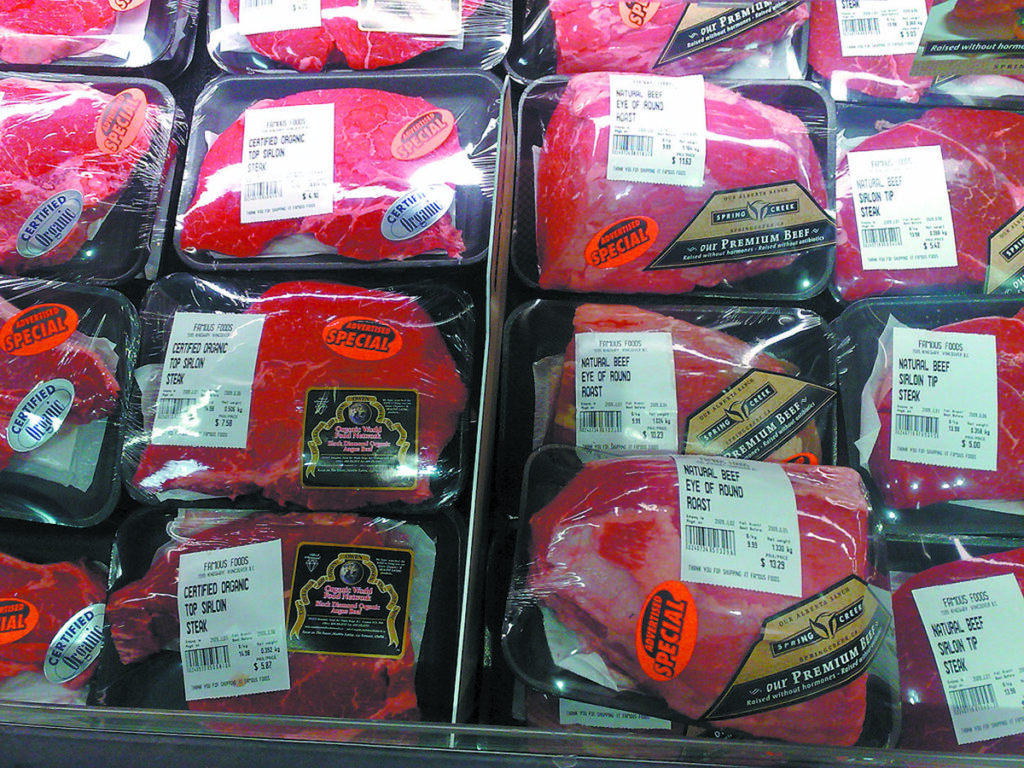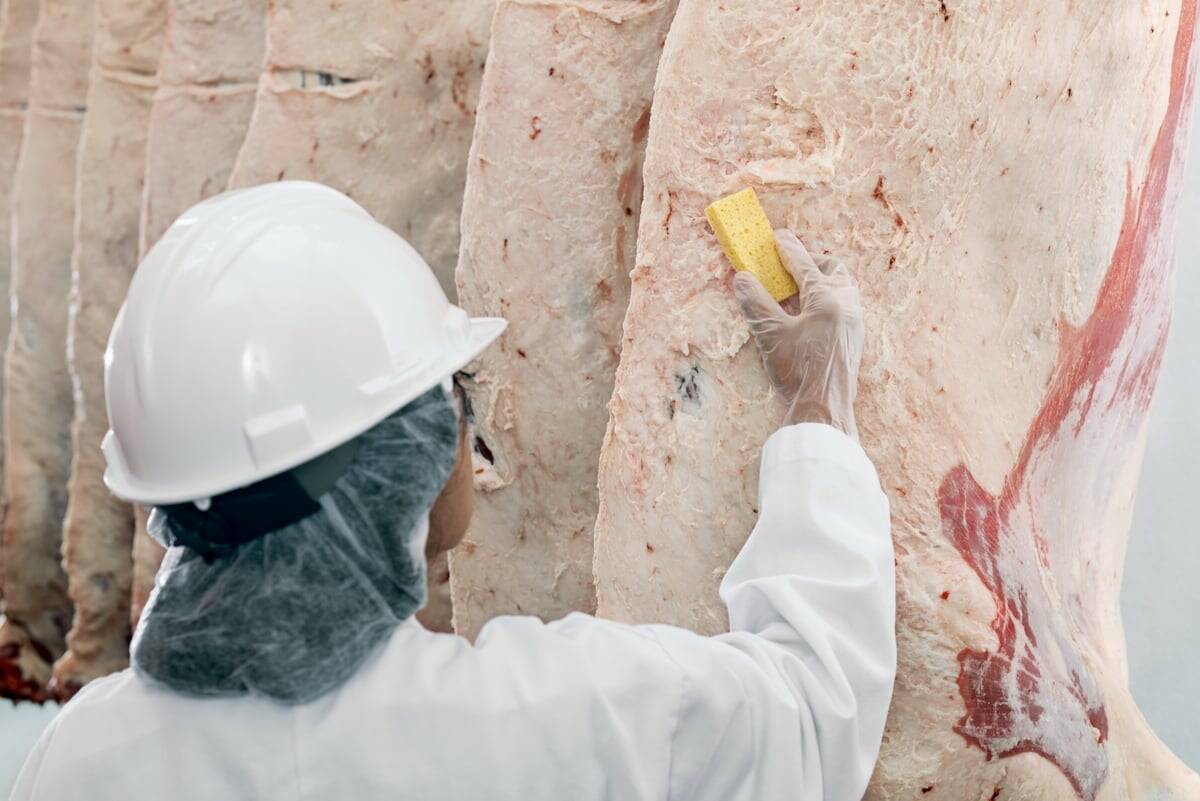Organic livestock faces challenges | The Western Producer

While organic crop production is taking off, organic livestock is falling behind.
According to a producer panel at the Advancing Organics conference in Saskatoon earlier this spring, there is a disconnect between organic standards and organic livestock production, which causes challenges such as meeting consumer demand, starting an organic livestock operation and filling production gaps.
“I think that demand is growing for our certified organic products,” said Bryce Lobreau, co-founder of 8Acres beef.
Read Also


Canadian beef exporters escape tariff damage
I could almost hear the huge sighs of relief coming from Canadian livestock and meat producers on April 2 when U.S. president Donald Trump announced he was imposing a new 10 per cent tariff on all imports.
“I just think as time goes on, we’ve said it for years, that people are becoming more aware of what they are eating and how it’s raised.”
Conscious consumerism has increased the demand for organic products, with some producers noticing that the “in between” products are being skipped over. Consumers are increasingly more likely to choose organic over free range and free run eggs, and grass fed beef.
“They’re going directly for the organic, or they’re going for what they can afford,” said Cheryl Norleen, co-owner of 4G Land and Livestock, which produces organic eggs.
“They’re like, if I’m going to spend the money, I’m going to go all the way and get the organic product.”
Some consumers are going a step further, if they’re able, and purchasing from farm to fork producers such as Heather Daoust, operator of Schmitt Organics. Daoust said she uses the opportunity to educate consumers and provide more information on how their food gets to their plate.
“My marketing strategy is essentially just like, making people have fun with you,” she said.
“And then they’re like, ‘oh, like, I saw all this online,’ and then they order, and your sales funnel is already set up on your website.”
The clean-food, buy-local trends have benefitted the sector, but panellists are worried about keeping up. They say there aren’t enough organic livestock producers because of the challenges involved in becoming certified organic, as well as following regulations to maintain certification from start to finish.
An animal for organic meat production must be under organic feed, transport, finishing and butchering to continue to be organic.
Information on following standards and becoming certified is difficult to find, meaning producers have to take things into their own hands or get help from others. Even reading through the standards can be confusing, let alone implementing them.
Lobreau’s business partner, Ben Stewart, is looking into ways to make information easier for farmers to understand and ease the process of becoming certified.
“We’re trying to make it easy,” Lobreau said.
“Because anyone can throw excuses why they don’t want to do something, so we’re trying to eliminate those excuses for why you can’t do it. We’re trying to be really flexible. We also know we need new people to certify their cattle.”
New certified cattle is key for Lobreau because 8Acres is an established certified organic beef production chain. Once producers have their operation and cattle certified, they can be shipped with 8Acres and it will also do the finish and handling.
The company’s market reach extends across the country, but it needs more numbers.
Those numbers don’t come easy. Daoust said there’s a lot of regulation when it comes to organic cattle, specifically, adding she has some conflicting opinions about the standards because there’s a disconnect on how producers need to operate.
“Well, I need to buy 20 more cows. I’m going to the auction market,” she said, giving an example.
“I’m not going to go to Bryce’s in June when he has pairs and they’re out at a pasture and buy his open cow and hope that it’s bred in the fall… It doesn’t fit with how the trade and the time of year you would need to buy your breds and the price.”
For beef cattle, as well as hogs and sheep, there is no transition period such as there is for crop production or dairy cattle. They must be born to organic parents or a new conventional dam under continuous organic management from the start of the final third of the gestation period.
If a non-organic animal is purchased as breeding stock, it must be placed under organic management before the final third of the gestation period.
Norleen faces the ripple effect of standard challenges when it comes to her chicken feed.
No Saskatchewan feed mills are completely organic, so her options were getting Super-B semi loads from Wetaskiwin Co-op in Alberta or growing her own feed.
“At our size of operation, that would be 40-ish days of supply,” she said.
“Which doesn’t seem long, but if we were short on some kind of mineral (in the feed), salt or calcium, whichever, you can’t change that for 40 days. And 40 days is a lot of production downtime, essentially, or loss.”
They opted to grow their own and buy the necessary supplements to ensure feed is always the same.
The lack of a Saskatchewan feed mill comes down to not enough organic supply for feed because producers want to sell it for bread making, believing they’ll get a better price. However, Norleen said her farm is willing to pay the same price.
“We need quality feed to produce quality food,” she said.
Dauost has faced a similar feed issue for her herd because she doesn’t have enough grazing acres for the number of cattle she raises, and certainly not to accommodate expansion.
“I think that we’re moving a lot more into the regenerative talk, but grain farmers should be a lot more open to doing fencing and infrastructure, the water and hosting cattle,” she said.
“I think this opens a lot of opportunity for diversity.”
Source: producer.com


